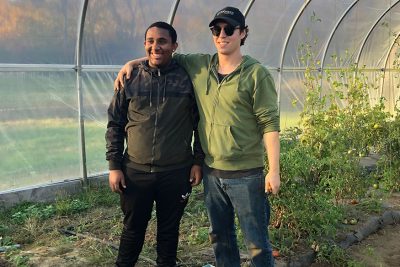Promoting Diversity, Equity, Inclusion, and Justice
 We firmly believe that the diversity of our community enriches our institution. Diversity and inclusion were core values and operational goals in the strategic visioning process, and we elevated diversity, equity, inclusion, and justice (DEIJ) as the fifth SVIC area after college-wide engagement.
We firmly believe that the diversity of our community enriches our institution. Diversity and inclusion were core values and operational goals in the strategic visioning process, and we elevated diversity, equity, inclusion, and justice (DEIJ) as the fifth SVIC area after college-wide engagement.
We aspire to create an inclusive, equitable, culturally competent, just, and supportive environment where the institutional culture models behavior that enriches the communities we serve. CAHNR is supporting and advancing a mission focused on promoting DEIJ in curriculum, outreach and extension programs, research activities, and institutional policies and practices. We are dedicated to working together to build a welcoming, equitable community where all can thrive. As a College, the initial focus areas include:
- Fostering inclusive, anti-racist, and culturally sustaining learning environments
- Creating space and support for historically excluded groups including Black, Indigenous, People of Color, LGBTQ+, neurodiverse, and people with disabilities
- Instituting inclusive and equitable policies and processes, with a particular focus on anti-racist and exclusionary structures and systems
- Establishing processes and approaches that ensure authentic community engagement.
Examples
Authoring a CAHNR DEIJ Planning Process document that summarized best practices, a visioning process and procedures, goals, objectives, and timelines for developing a DEIJ Plan for CAHNR. The SVIC collected information by reviewing diversity plans from peer and aspirant colleges/universities and from other UConn units.
Advocated for DEIJ leadership positions including Associate Dean of Diversity and a Justice, Equity, Diversity, and Inclusion Senior Faculty position to facilitate and coordinate efforts.
Brought Stuck in the Tape, an interactive play for CAHNR students, faculty, staff, and administrators to campus for two events in spring 2023. A discussion followed each production and focused on priority areas to address DEIJ issues across CAHNR.
Conducted collaborative workshops in spring 2024 to draft a DEIJ vision statement and associated action steps for CAHNR. The HartBeat Ensemble facilitated these and sought input from students, staff, faculty, administrators, and community stakeholders. The diversity statement included on page 4 is a result of this process.
Examples of CAHNR mission areas that align with this SVIC
Established ongoing partnership with the Mashantucket Pequot Tribal Nation and UConn Extension in 2017 and led to the development of Meechooôk Farm and other programs to strengthen tribal community, their land base, and self-sufficiency. The Tribe and UConn Extension received a national partnership award from the U.S. Department of Agriculture National Institute of Food and Agriculture (USDA NIFA) in 2024.
A research and teaching program is improving access to culturally and linguistically tailored health information about Parkinson’s disease in Hispanic communities nationally. This population has the highest incidence of Parkinson’s disease in the country, and research, teaching, and service is improving healthful outcomes. CAHNR has also offered an exercise class for people with Parkinson’s disease for the past 10 years.
UConn Extension’s new and beginning farmer programs serve those with 10 or fewer years of experience and seek to provide solid ground for an inclusive, vibrant, and sustainable agriculture industry and food supply. USDA NIFA recognized the visionary leadership and diversity of this 12-year-old program with a national award in 2023. An Extension-led program provided professional development for people of color to increase their community leadership skills through the Leaders of Color in Conservation (LOCC) training program. Those trained implement the knowledge on their farms and share it with their community members.
A study examined unequal access to parks and green spaces, specifically in urban areas, and identified neighborhoods that should be improved to provide more equitable access. The investigation method identified can help address social justice issues and funding disparities at local levels, leading to greater access for all residents to parks and greenspaces.
Research and community engagement in North Hartford address health disparities in marginalized populations caused by food environments. Structural challenges in the city can be addressed with resources and public policy changes, and CAHNR is helping by leveraging Community-Based Participatory Research.